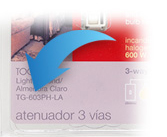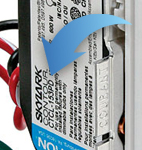
Explore Knowledge Articles
App Note 840 Hardware Overview
Overview:
This article will be going over the hardware components and comparisons from Application Note 840 regarding upgrading a Homeworks Illumination system to a Homeworks QSX system to take advantage of the latest product offerings and new features provided in the system such as using the Lutron App and use of Ketra lighting.
For the full details of upgrading from Homeworks Illumination to Homeworks QSX, please see the full application note: Application Note 840
Comparison of the systems
One of the largest differences between Illumination and QSX is the amount of links on the processor. QSX has condensed quite a few of the links used from 9 separate links down to 2. Primarily those links will consist of Wired QS devices, and Wireless RF devices. Below is a table showing the links from Illumination, and which link they'd go to within QSX.
Another key difference is the variation of processor models. Illumination had multiple processor models with some of the 'extra' equipment built into the processor such as an H48 board or D48 board. There were also three 'main' models for the Illumination system: Series 4, Series 8, and RF. QSX primarily only has 3 different processors: A 1 link, a 2 link, and a hybrid wireless processor.
When it comes to wiring processors together, Homeworks Illumination had a dedicated link for Processor-to-Processor communication. This would explain any extra RS-232 wires between processor locations during the upgrade if they had multiple processors. QSX no longer requires this and will communicate with other processors directly through the network. For more details on this, please see our QSX Networking Guide: HWKS 16.0+ NETWORKING GUIDE APP NOTE (048760) (lutron.com)
IMPORTANT NOTE: Most of the Illumination devices were powered off of 15vdc power supplies. Homeworks QSX devices are powered off of 24vdc power supplies. Do not attempt to reuse any Homeworks Illumination power supplies except the transformer for the MI/SPI.
Upgrade recommendations
As mentioned, the Illumination processors had various links for multiple purposes. We'll describe each link in this section, what devices used that link, and how to best convert the link to QSX. Below is a breakdown of the types of links in a table used in Series 4, Series 8, and RF processors:
Click here to expand and view the tables.
- Link 1
Link 1 is commonly referred to as the Panel Link. This would go to any panels with RPMs and connect to their MIs.
This link would be converted and merged into a QS link of the QSX system and use the new Panel Link Translator in place of the MI in a near 1-to-1 replacement.
Note: If replacing an MI with the Panel Link Translator, ensure that you have it set to Hi-1 to communicate with the RPMs.
Note: When using RPMs in QSX, we highly recommend ensuring they do not have the White Labels, indicating they were produced before 2003. The reason for this is to avoid any strange behavior within the system, and to avoid complete LED incompatibility.
- Link 2
Mentioned earlier in the article, Link 2 is used for cross-processor communication when using multiple processors.
QSX processors can now communicate with each other via the network, so this RS-232 connection will not be needed.
- Link 3
Link 3 was an RS-232 port connection for integrators to use.
For QSX, RS-232 integrations can still be used with a third-party device that can convert Ethernet to RS-232. The QSX processor can then send ethernet commands to the third-party device to the integrator.
Note: This method will only allow commands to be sent; the QSX processors are not able to receive commands back from the integrators with this method. If sending and receiving messages are required, LEAP integration would be required. Please see our Leap Integration Article for more detail: Lutron's LEAP API Integration Protocol | Lutron
- Link 4-6
These links are configurable for various devices on an Illumination system. Commonly they will host any of the following devices: Legacy Keypads, Wired Dimmer Boards (H48), Wired Vareo Dimmer Boards (D48), Legacy Grafik Eye Devices, and/or Sivoia QED Shades (Q96). Below is a breakdown table of the recommended upgrades:
Legacy Keypads can keep their current wiring, but be merged into a QS link. The keypads themselves would need to be replaced with any of our currently available keypads compatible with QSX, however the Palladiom and SeeTouch keypads would ensure no backbox changes would need to be done.
Vareo and Maestro devices wired to an H48 or D48 board; the boards would be removed completely, and the dimmers/switches would need to be replaced with the HQRD/HQRA equivalent models or upgraded to the HRST Sunnata models. The wiring should be almost 1-to-1, with the exception of capping off and not using the low voltage white and purple wires in each location. See below for a table of models and their current-day counterparts:
Note: If upgrading to Sunnata devices, ensure any 3-way or multilocation installations have the HRST-PRO or HRST-8ANS on the load side of the installation.
Legacy Grafik Eye devices will need to be replaced with their current-day equivalent Grafik Eye QS devices (QSGR or QSGRJ models). These would be a direct, 1-to-1 replacement.
Sivoia QED Shades and their Q96 Interface would need to be replaced with a Sivoia QS Shade and their power supplies. For full details on this upgrade, please see our Upgrading Your Shades article: Upgrading Your Shades from QED to QS Motor Systems | Lutron
- Link 8
All RF devices from Illumination will need to be replaced with the current equivalents. Legacy RF devices are unable to communicate with our current repeaters, hybrid processors, or RF devices. Please see the table below for a list of all RF models and their current-day equivalents:
- Link 9
This link was an Ethernet port used for the initial setup and integration via third-party devices. QSX processors will use their onboard ethernet ports to communicate with other processors on the network, as well as allow third-party integration to communicate as well.


